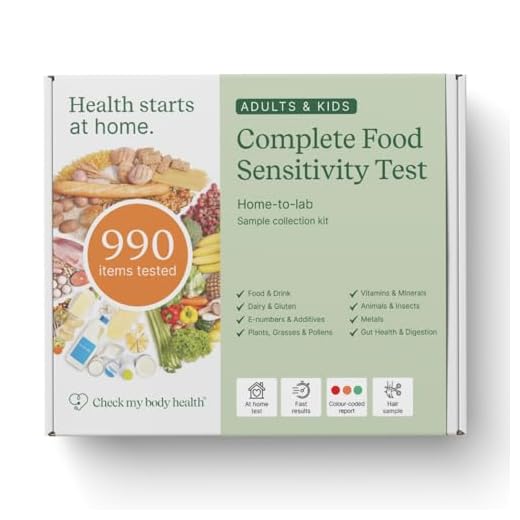








Start with a cold compress applied directly to the affected area. This simple yet effective method can significantly reduce swelling and discomfort. I found relief this way on several occasions when my furry companion triggered unwanted skin reactions.
Antihistamines are often a go-to solution. Over-the-counter options like cetirizine or loratadine can help minimise itchiness and irritation. I remember the first time I tried them; within an hour, I felt much more at ease while cuddling with my dog.
Regularly bathing your pet with hypoallergenic shampoo can also make a noticeable difference. This practice reduces dander and allergens in your home, creating a more comfortable environment. On weekends, I dedicate some time to grooming my pup, which not only helps with my sensitivities but also strengthens our bond.
Consider incorporating air purifiers in your living space. These devices can significantly improve air quality by filtering out allergens and pollutants. Since I started using one, I’ve noticed fewer episodes of discomfort, allowing me to enjoy my time with my canine friend without constant worry.
Consulting a healthcare professional for tailored advice is wise, especially if symptoms persist. They can recommend specific treatments or even allergy testing, which was a game changer for me when I sought help after frequent flare-ups.
Identifying Symptoms of Pet-Induced Skin Reactions
Look for red, raised welts on the skin that may vary in size. These irritations often appear suddenly, especially after close contact with a furry friend. Itchiness is typically present, compelling the individual to scratch, which can worsen the condition. Pay attention to any swelling around the eyes or lips, as this can indicate a more severe response. In some cases, blisters may form, and the skin can feel warm to the touch.
Observe if the individual experiences respiratory issues alongside skin reactions. Symptoms such as sneezing, coughing, or nasal congestion can accompany dermal irritations, signalling a broader immunological response. Monitor for any gastrointestinal disturbances, like nausea or abdominal pain, which might also arise during such episodes.
Keep a record of exposure times and the severity of symptoms. Noting when reactions occur can help identify specific triggers related to pet interactions. If symptoms persist or worsen, seeking professional medical advice is crucial for proper assessment and management of these reactions.
Over-the-Counter Antihistamines for Immediate Relief
For quick relief, consider these over-the-counter antihistamines:
- Loratadine: Non-drowsy option effective for reducing itching and discomfort.
- Cetirizine: Slightly sedating, this remedy works well for swelling and redness.
- Diphenhydramine: Stronger sedative effect; great for nighttime use if symptoms disrupt sleep.
- Fexofenadine: Non-sedating and longer-lasting, suitable for ongoing management.
Each of these options can provide varying degrees of relief. It’s wise to check with a pharmacist or healthcare provider if unsure about which one to choose. Always follow dosage instructions on the packaging for safety.
Combining antihistamines with other remedies, like topical treatments, can enhance comfort. Consider keeping a specific brand on hand for those unexpected flare-ups. A personal tip: I’ve found that taking antihistamines before exposure to allergens can help minimise reactions.
Monitor your body’s response and adjust as necessary. If symptoms persist or worsen, it’s advisable to consult a medical professional for further guidance.
Home Remedies to Alleviate Itching and Discomfort
Cold compresses can significantly reduce irritation. Apply a clean, damp cloth to affected areas for 10 to 15 minutes. This helps cool the skin and provides immediate relief from the burning sensation.
Oatmeal Baths
Soaking in an oatmeal bath is highly soothing. Use colloidal oatmeal, which you can find in stores or make by grinding plain oats into a fine powder. Add this to warm bathwater and relax for about 15 to 20 minutes. It calms the skin and alleviates itching.
Natural Anti-Inflammatory Options
Aloe vera gel is excellent for its cooling properties. Apply fresh aloe directly from the plant to the irritated skin to soothe inflammation. Additionally, coconut oil can help moisturise and protect the skin, reducing the urge to scratch. Apply it gently to the affected areas.
Apple cider vinegar diluted with water can also be beneficial. Mix equal parts vinegar and water, then dab it onto the skin with a cotton ball. This remedy may help balance the skin’s pH and reduce discomfort.
Finally, consider herbal teas like chamomile or peppermint, known for their anti-inflammatory properties. Drinking these teas or using cooled tea bags as compresses can provide relief.
When to Seek Medical Attention for Hives
If symptoms escalate, immediate medical help is necessary. Signs indicating an urgent situation include severe swelling, difficulty breathing, tightness in the throat, or a rapid heartbeat. These may suggest anaphylaxis, a life-threatening reaction requiring immediate intervention.
If the skin irritation persists for more than a few days despite home remedies and over-the-counter solutions, consulting a healthcare professional is advisable. Persistent rashes can signal a need for prescription treatments or allergy testing.
In cases where the affected individual has a history of severe reactions, it’s prudent to have an action plan in place. This plan should include knowing when to use an epinephrine auto-injector and ensuring that it is accessible at all times.
Additionally, if a pet’s diet changes, such as when introducing new foods, it’s wise to monitor for any signs of distress or discomfort. For instance, considering the best foods for dogs with liver problems might help in managing allergies more effectively.
In summary, vigilance is key. Always err on the side of caution and seek professional advice if there is any uncertainty regarding the severity of the situation.
Long-Term Strategies to Manage Canine Allergens
Regular cleaning routines can significantly reduce exposure to allergens. Vacuuming your home at least twice a week with a HEPA filter vacuum can help trap airborne particles. Don’t forget to wash your dog’s bedding weekly and consider using washable covers for furniture.
Environmental Modifications
Creating an allergy-friendly environment is key. Designate pet-free zones, especially in bedrooms, to minimise contact. Use air purifiers equipped with HEPA filters to capture allergens and improve indoor air quality. Regularly changing HVAC filters can also prevent the buildup of allergenic materials.
Dietary Considerations
Incorporating a high-quality diet for your pet can help reduce shedding and dander. Foods rich in omega-3 fatty acids may promote healthier skin and coat, potentially lowering allergen levels in your home. Consult with a vet to find the best dietary options for your furry companion.
| Strategy | Description |
|---|---|
| Regular Cleaning | Vacuum and wash bedding weekly to reduce allergen accumulation. |
| Designate Pet-Free Zones | Keep certain areas, like bedrooms, free from pets to limit exposure. |
| Use Air Purifiers | HEPA air purifiers can help filter out allergens from the air. |
| Dietary Adjustments | Feed pets high-quality food to improve skin health and reduce dander. |
Regular vet check-ups can assist in managing your pet’s health, which in turn may reduce allergenic responses. Keeping an eye on your dog’s grooming routine, possibly with professional help, can also be beneficial. These adjustments contribute to a more comfortable living environment for both you and your beloved pet.
Preventive Measures to Minimise Allergic Reactions
Regular grooming of your furry friend is crucial. Brush your pet weekly to reduce loose fur and dander that can trigger sensitivities. Consider enlisting a professional groomer, especially if you are prone to flare-ups.
Establish a designated pet-free zone in your home, ideally your bedroom. This space should remain as allergen-free as possible, providing you with a sanctuary to retreat to during high pollen seasons or when your companion has been particularly active.
Invest in high-efficiency particulate air (HEPA) filters for your home. These filters trap allergens and improve indoor air quality, helping to reduce the likelihood of reactions. Make sure to change the filters regularly for optimal performance.
Wash your hands thoroughly after handling your pet or cleaning their belongings. This simple practice can prevent the transfer of allergens to your face and eyes, reducing potential reactions.
Choose hypoallergenic pet products, such as bedding and toys, designed to limit allergen accumulation. Look for materials that are easy to clean and resistant to trapping dander.
Maintain a consistent cleaning schedule. Vacuum carpets and upholstery frequently using a vacuum equipped with a HEPA filter. Dust surfaces regularly to minimise the build-up of allergens.
Consider allergy testing to identify specific triggers. Knowing what you’re sensitive to can help you take targeted measures and make informed decisions about your environment.
Limit outdoor activities during peak pollen times. If your canine companion enjoys outdoor play, consider doing so in the early morning or late evening when pollen counts are typically lower.
Finally, consult with an allergist for personalised advice and potential long-term solutions, such as immunotherapy, which may offer greater control over your reactions.








